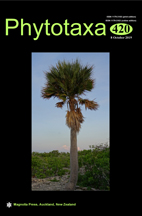Abstract
Alwin Berger, a German Botanist, was curator of the Hanbury Botanical Gardens (also known as “La Mortola” from the name of its locality near Ventimiglia, North-Western Italy) during the period 1897–1915. During his curatorship, the cactus collection was enlarged thanks to the numerous specialist, American collectors and the exchanges with prestigious Botanical Gardens such as New York Botanical Gardens and Botanic Garden of Palermo. The study of this unique collection allowed Berger to publish a revolutionary systematics work on the genus Cereus s.l., including the description of many new species under Opuntia s.l.. The taxa described as new by Berger are currently considered as unresolved cases with a incertae status, and few names are typified with dry specimens at present, and without still living known or studied plants in cultivation or with modern illustrations. The discovery of many Berger’s Opuntia in cultivation in some Italian historical gardens and as well as the finding of exsiccata in K, HMGBH (Herbarium Mortolensis), NY and US which were never before studied, led us to start a revision of the Berger’s new names in Opuntia s.l.. Our investigation allowed to confirm the identities of Opuntia bergeriana, O. gilva, O. haematocarpa, O. ledienii and O. winteriana, and the recognition as valid species for O. exaltata, O. schumannii and O. zacuapanensis. 5 lectotypes, 1 neotype, and 4 epitypes are designated in the present paper. In addition, a new Opuntia species, O. mantaroensis is here described for a Peruvian plant misidentified by F. Ritter as O. inaequilateralis. To completion, the neotype of O. tomentosa, the valid species to which the Berger’s name is referred (i.e. O. tomentella) was also designated here.

